Are you exploring air-dried or freeze-dried dog food options but unsure where to begin? As a dog owner with picky Alaskan Klee Kai breeds, I’ve tested many brands to find convenient, high-quality choices that suit sensitive stomachs. Badlands Ranch caught my attention with its human-grade ingredients and superfood focus, prompting me to try it on my dogs, Skye and Copper. This Badlands Ranch dog food review dives into the pros and cons based on real feeding trials, helping you decide if it’s right for your pup.
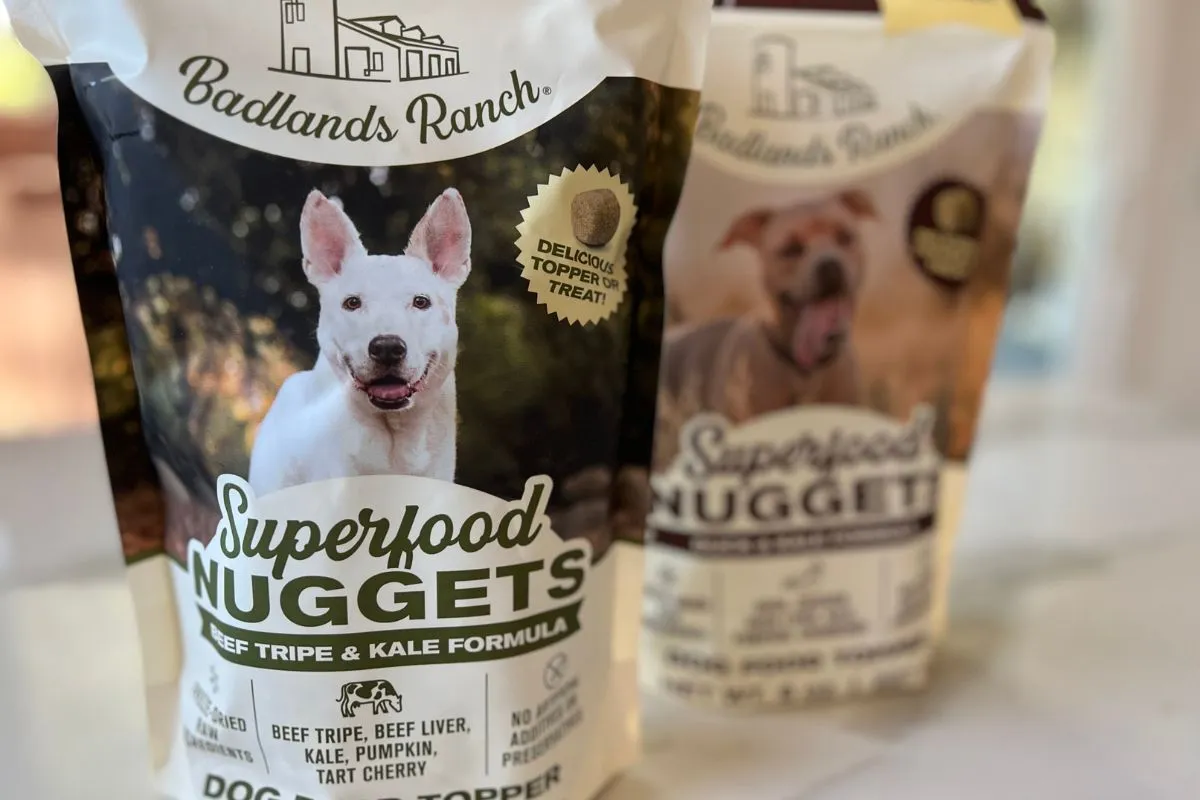 Badlands Ranch Superfood Nuggets packaging review
Badlands Ranch Superfood Nuggets packaging review
Badlands Ranch expanded its lineup in 2025 with freeze-dried raw options, alongside their popular air-dried Superfood Nuggets. If you’re transitioning from kibble or fresh meals, this brand offers a shelf-stable alternative without the hassle of refrigeration. For comparison, I’ve also reviewed fresh options like reviews of the farmers dog, which provide customized nutrition but require more prep.
Pros of Badlands Ranch Dog Food
Badlands Ranch stands out in the air-dried dog food category for several reasons, especially for owners of finicky eaters.
Human-Grade Ingredients for Sensitive Tummies
The cornerstone of Badlands Ranch recipes is their use of USDA-certified meats and fresh fruits and vegetables. This human-grade approach gave me confidence feeding it to Skye and Copper, who have delicate digestive systems.
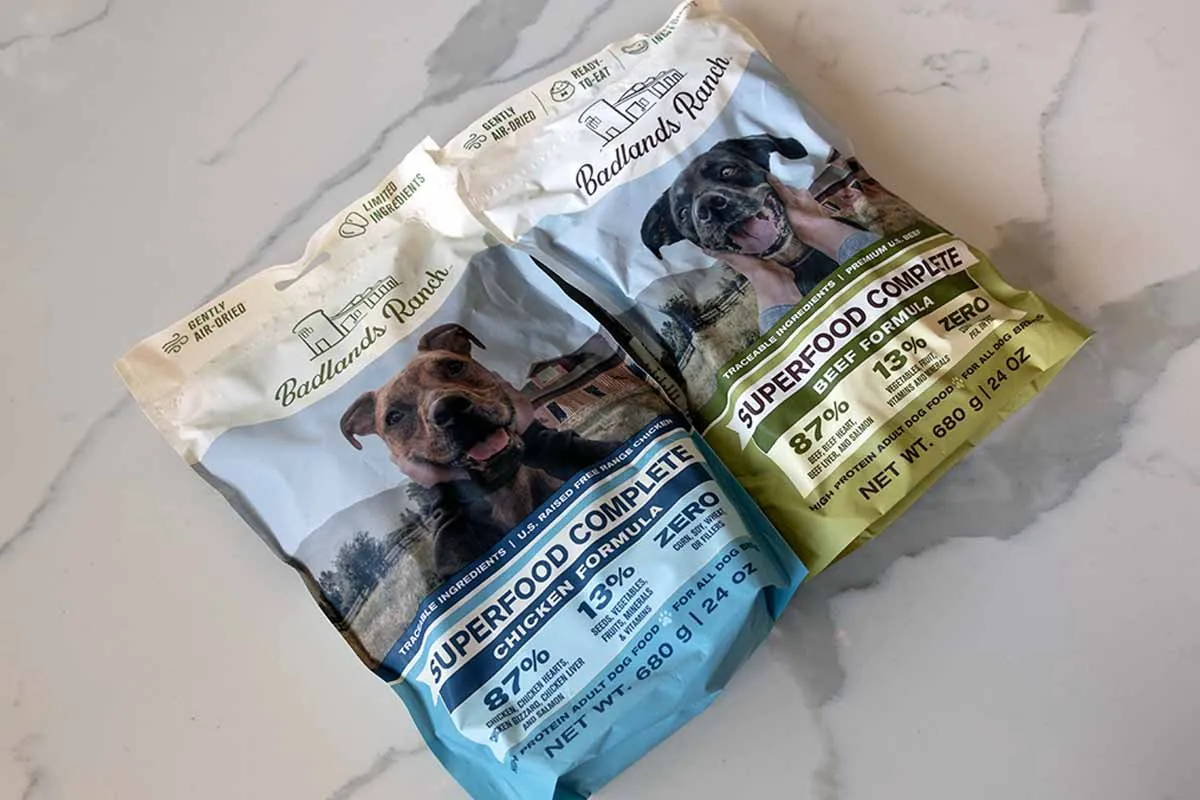 Badlands Ranch ingredient showcase
Badlands Ranch ingredient showcase
Traditional kibble often includes fillers that upset sensitive stomachs, but Badlands Ranch prioritizes natural, recognizable ingredients. Veterinary experts emphasize that human-grade proteins reduce allergy risks and support overall health—always consult your vet for personalized advice.
Superfoods for Targeted Health Benefits
Badlands Ranch incorporates superfoods designed to aid skin and coat health, digestion, immunity, and energy levels. Their Superfood Complete recipes come in both air-dried and freeze-dried formats, making it versatile for different needs.
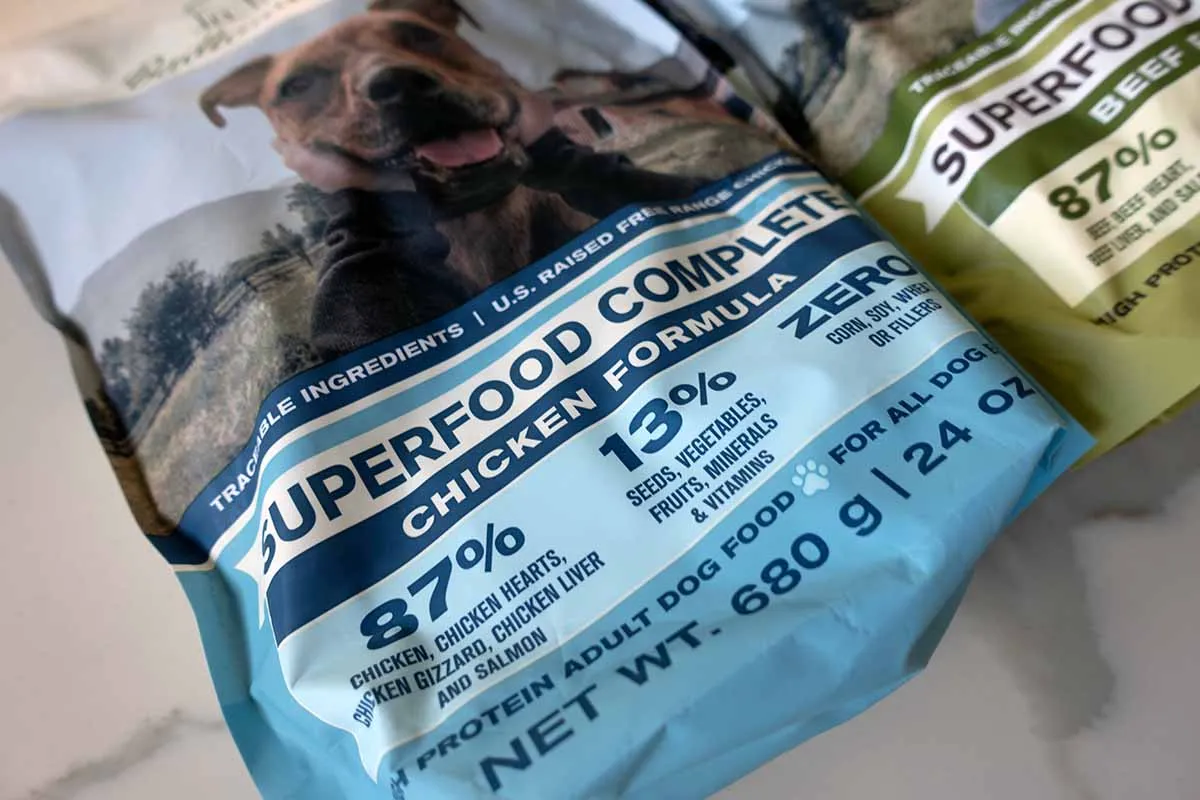 Badlands Ranch chicken recipe close-up
Badlands Ranch chicken recipe close-up
While I’m not a certified nutritionist, the transparency on their site about formulations backed by nutritional science is reassuring. This sets them apart from standard kibble, aligning with recommendations from organizations like the World Small Animal Veterinary Association for nutrient-dense diets.
After the first few days, I noticed shinier coats on my Klee Kai dogs, though individual results vary.
Gently Air-Dried for Flavor and Nutrition
Unlike high-heat kibble processing, Badlands Ranch uses a gentle air-drying method that preserves nutrients and enhances palatability. This was a game-changer for Skye, who previously rejected dry food.
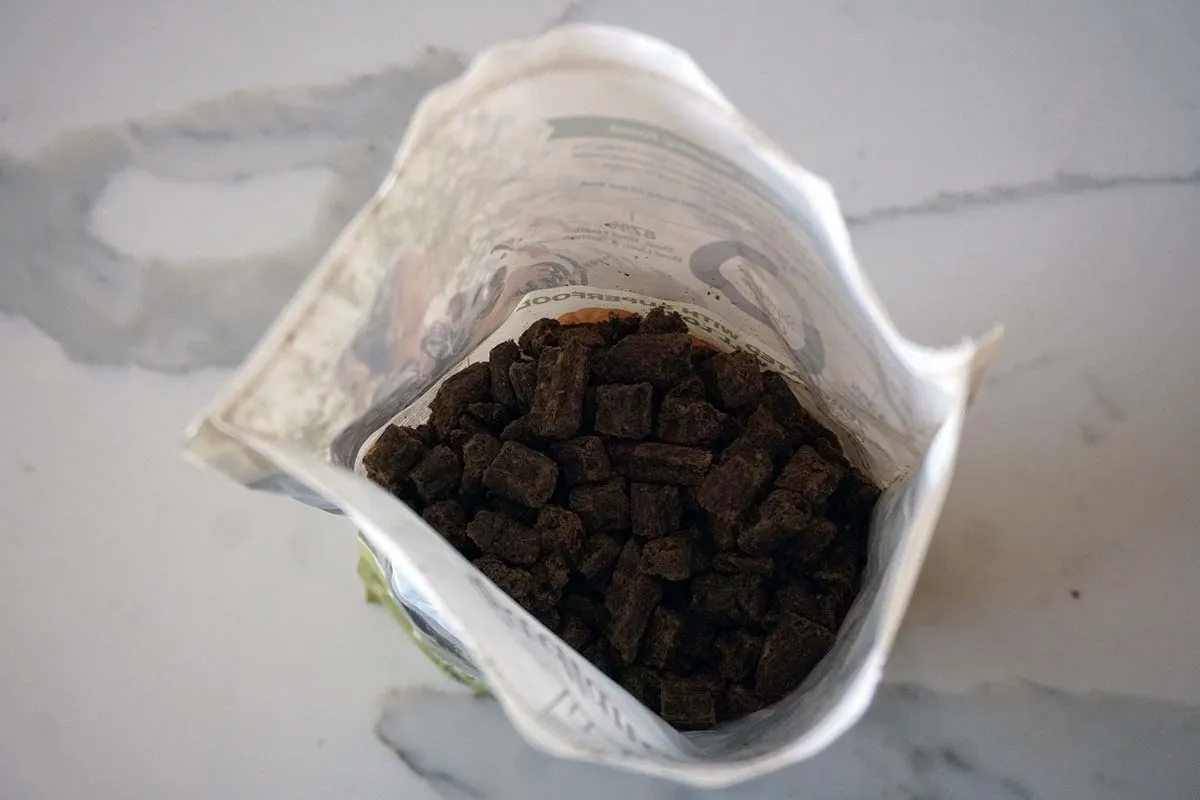 Inside the Badlands Ranch food bag
Inside the Badlands Ranch food bag
The process minimizes oxidation, retaining more natural flavors and vitamins compared to extruded kibble. Pet nutrition studies support air-drying as a superior preservation technique for meat-heavy formulas.
Nugget Format as Toppers or Meals
Their 2025 Superfood Nuggets in beef and chicken are perfect toppers, adding texture and appeal to regular meals.
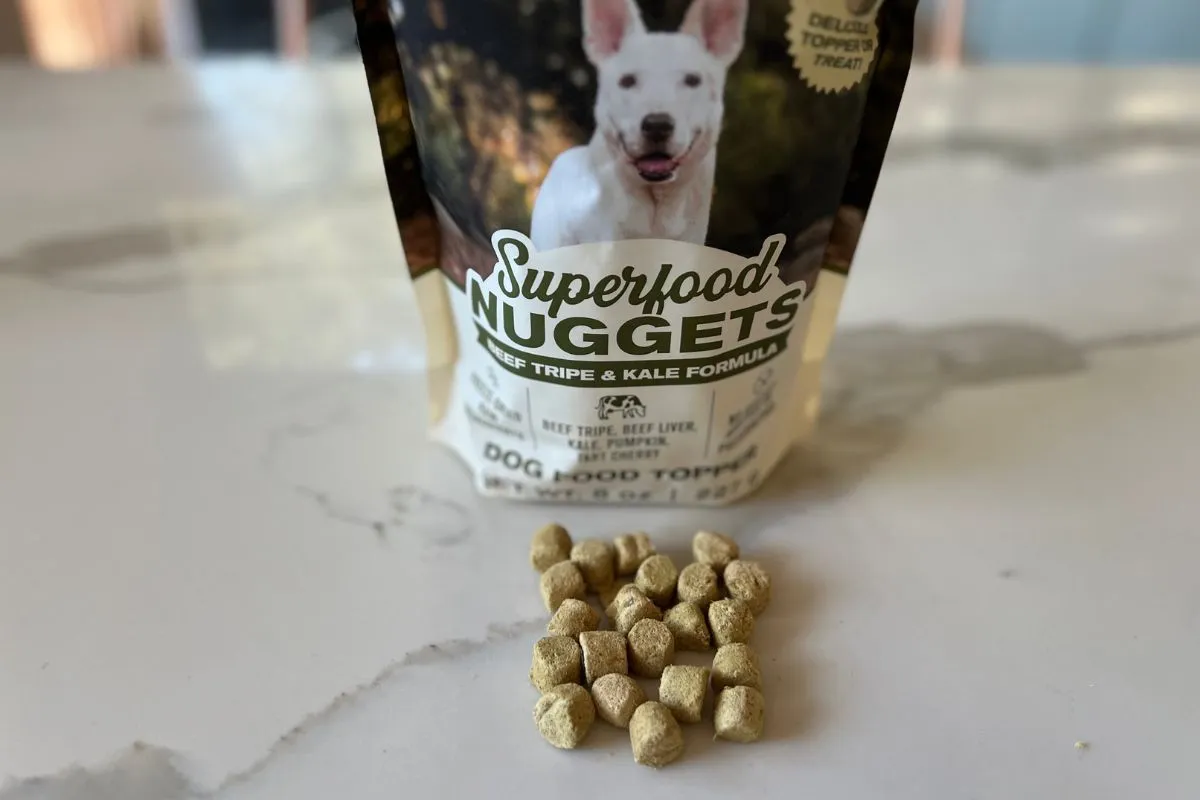 Badlands Ranch Superfood Nuggets texture
Badlands Ranch Superfood Nuggets texture
This innovation caters to picky eaters, much like freeze-dried toppers from competitors. It’s a smart expansion for variety without overhauling your dog’s diet.
Convenient Shelf-Stable Storage
Air-dried format means no freezer space or thawing—simply scoop, serve, and store. As a busy pet parent, this simplicity rivals fresh services like reviews on farmer’s dog food, but with less logistics.
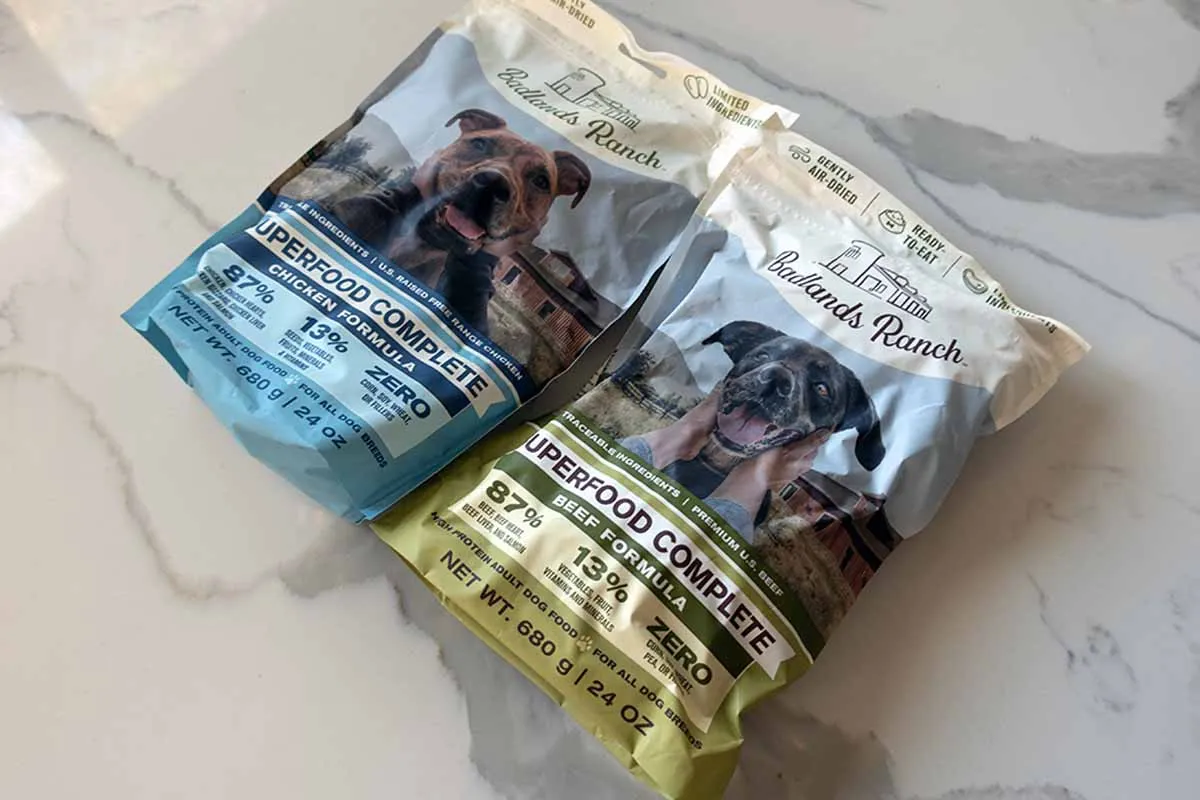 Badlands Ranch recipe bags displayed
Badlands Ranch recipe bags displayed
More Pros: Texture, Meat Content, and Picky Eater Appeal
The jerky-like texture mimics treats, drawing even reluctant eaters. Badlands Ranch boasts 87% meat content on bags, higher than many fresh foods I’ve tried (typically 40-60%).
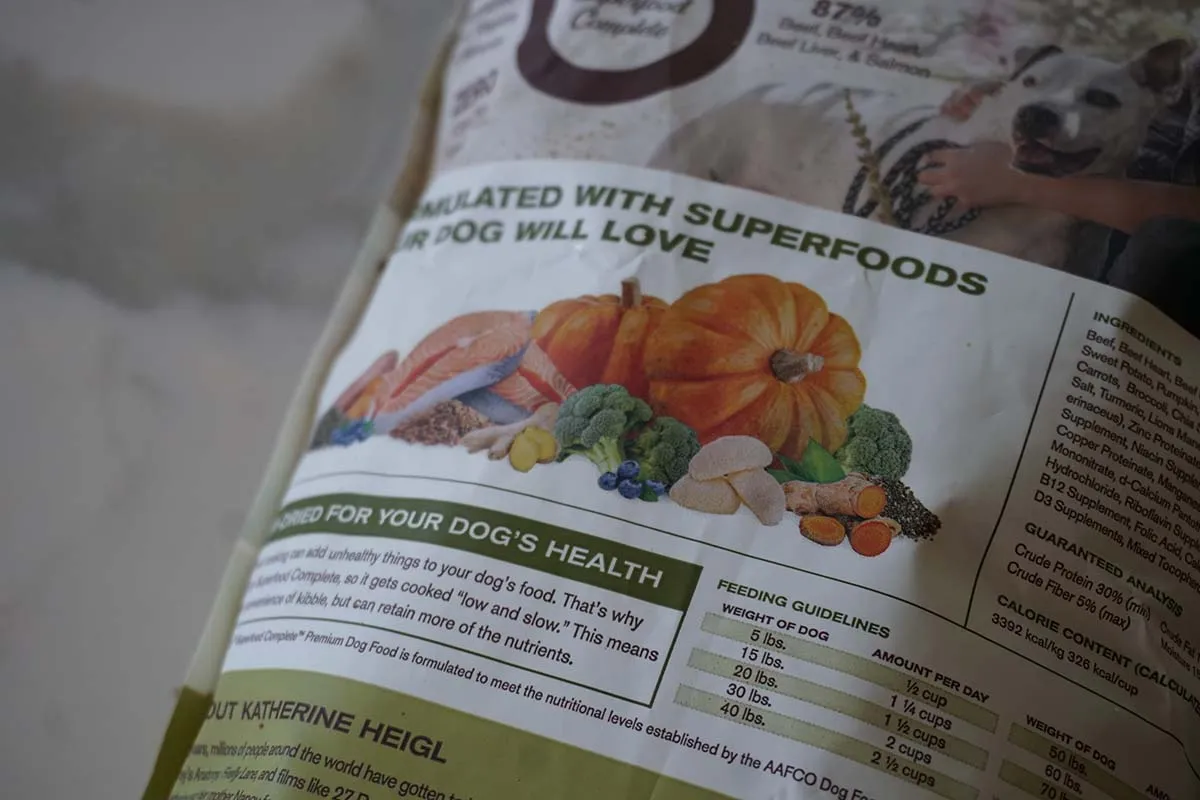 Badlands Ranch high-meat kibble pieces
Badlands Ranch high-meat kibble pieces
Copper and Skye devoured it, especially the beef variety, finishing bowls quickly. This treat-like quality makes it ideal for training or walks, outperforming bland kibble.
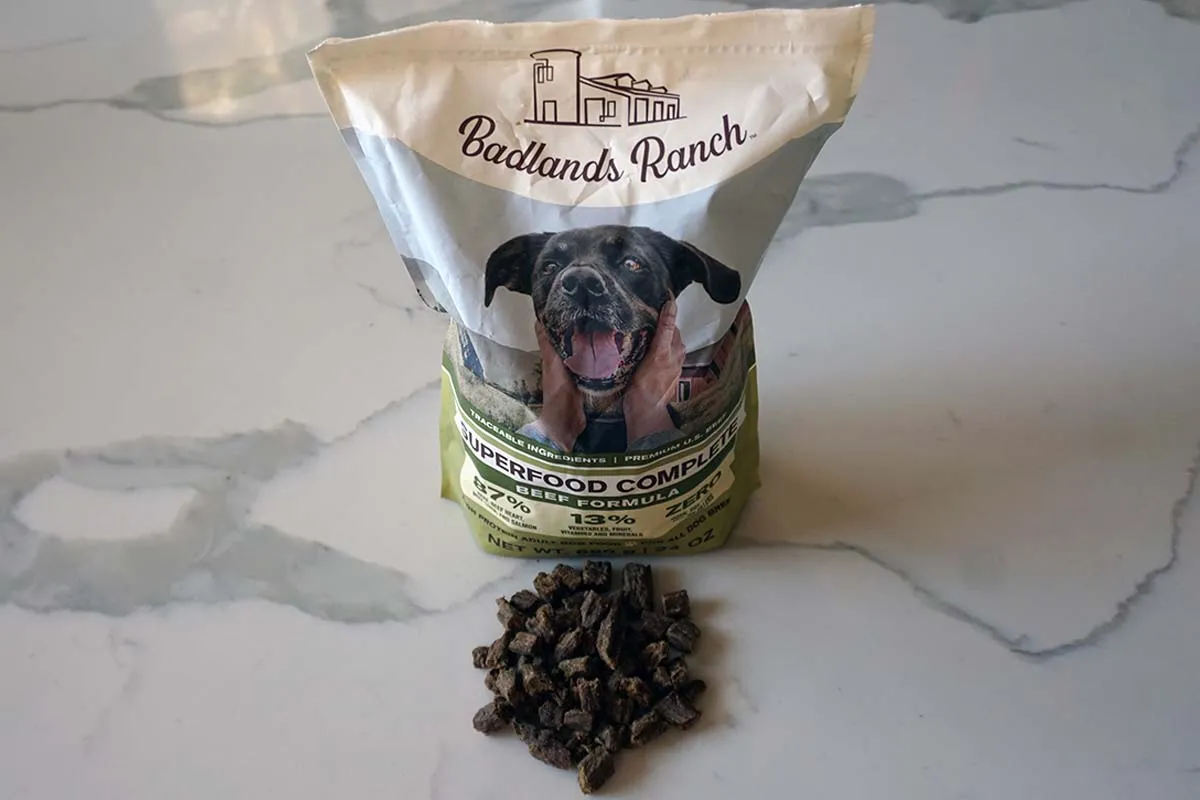 Dogs enjoying Badlands Ranch meal
Dogs enjoying Badlands Ranch meal
For context, when comparing to fresh deliveries, check reviews on the farmer’s dog food for insights on moisture-rich alternatives.
Cons of Badlands Ranch Dog Food
No product is perfect—here’s where Badlands Ranch falls short.
Premium Pricing Compared to Kibble
Expect to pay more than grocery store kibble. My monthly order for two small dogs was $170.85, a premium for the quality.
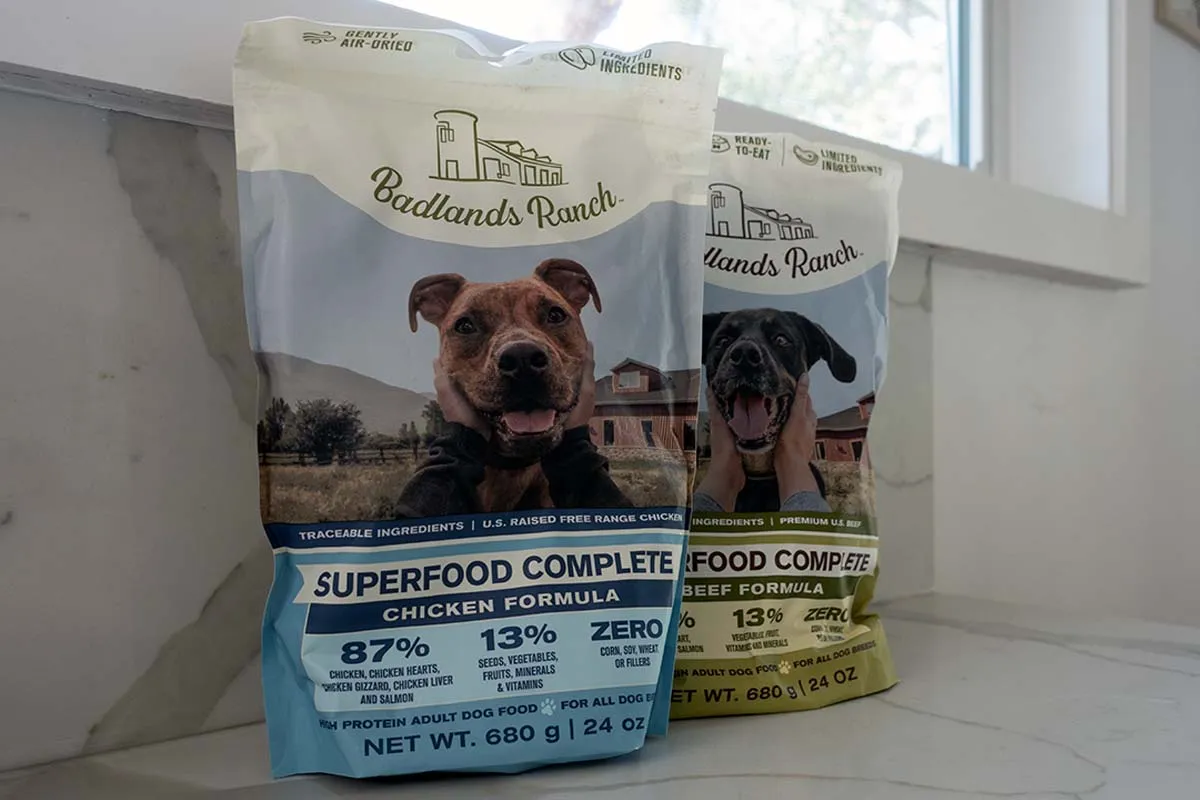 Badlands Ranch pricing label
Badlands Ranch pricing label
Budget-conscious owners might sticker shock, though it’s comparable to other human-grade services.
Higher Cost Than Some Air-Dried Competitors
It edges out alternatives like Sundays ($139.98/month for my dogs), saving $30+ monthly. Long-term, that adds up.
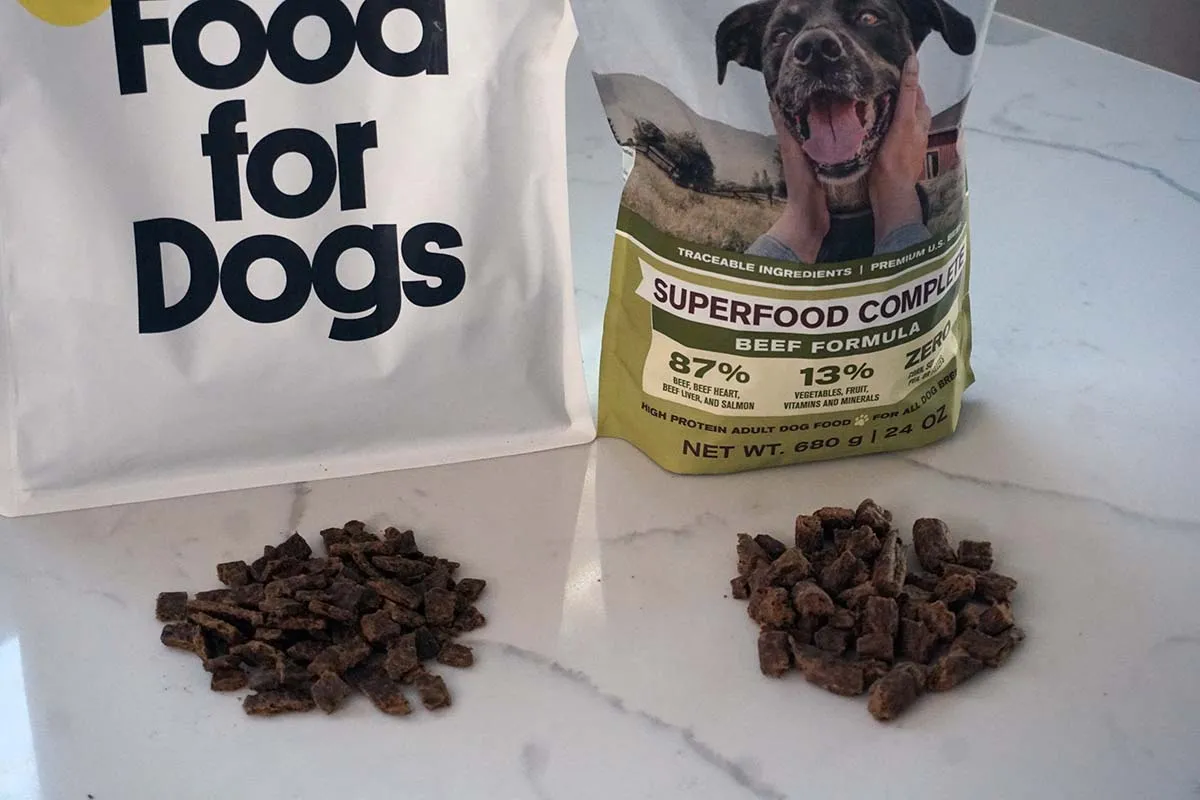 Cost comparison graphic Sundays vs Badlands
Cost comparison graphic Sundays vs Badlands
Smaller Bag Sizes and Storage Issues
Bags are 24oz (680g) each, requiring multiples for a month. They don’t stand upright, taking extra cupboard space.
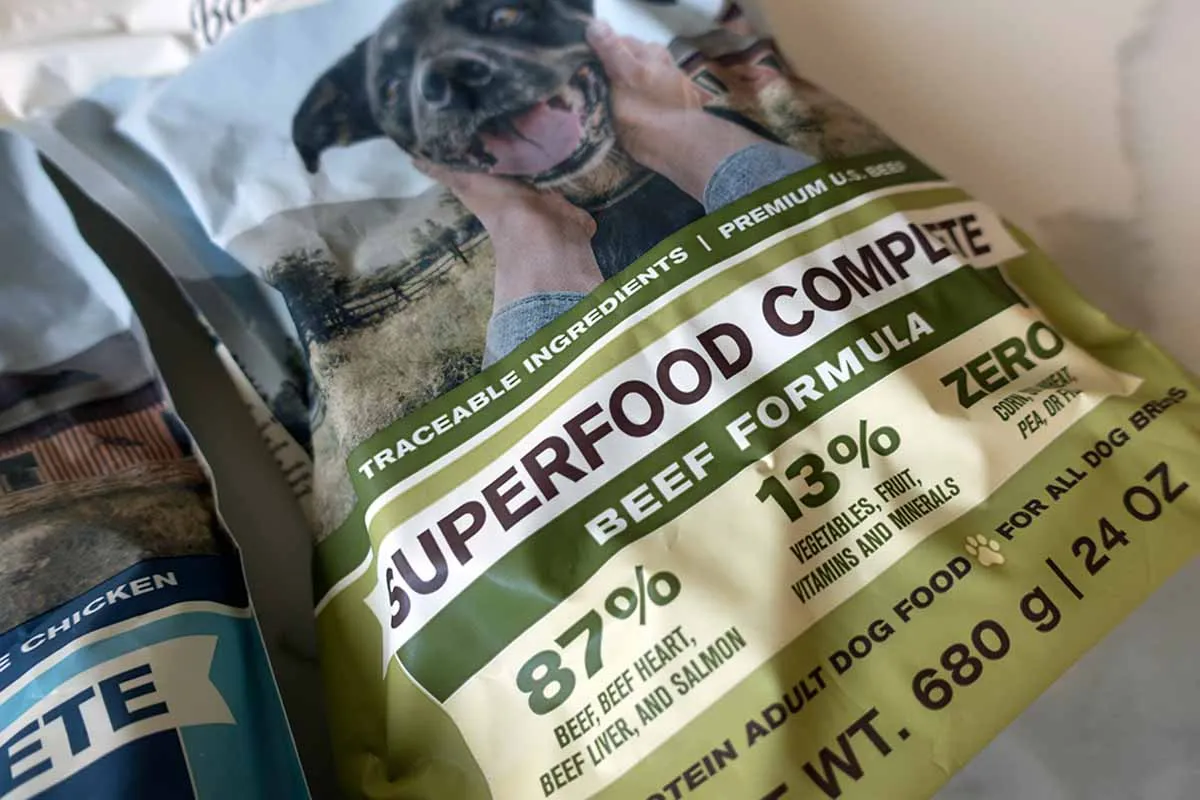 Badlands Ranch small bag design
Badlands Ranch small bag design
Limited Customization Options
No profile-based personalization during signup, unlike tailored fresh services. See reviews of the farmer’s dog food for brands with detailed quizzes.
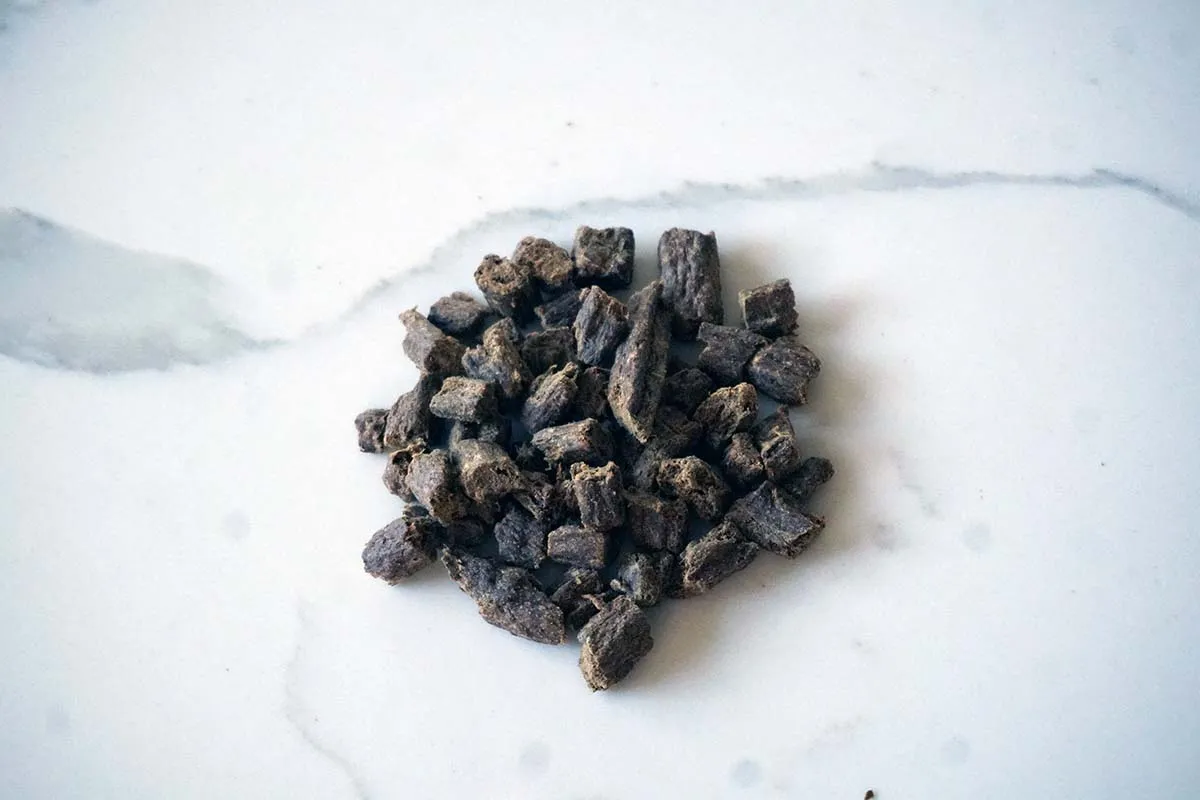 Badlands Ranch nugget treat texture
Badlands Ranch nugget treat texture
This quick process suits some but frustrates those wanting precision.
Would I Recommend Badlands Ranch Dog Food?
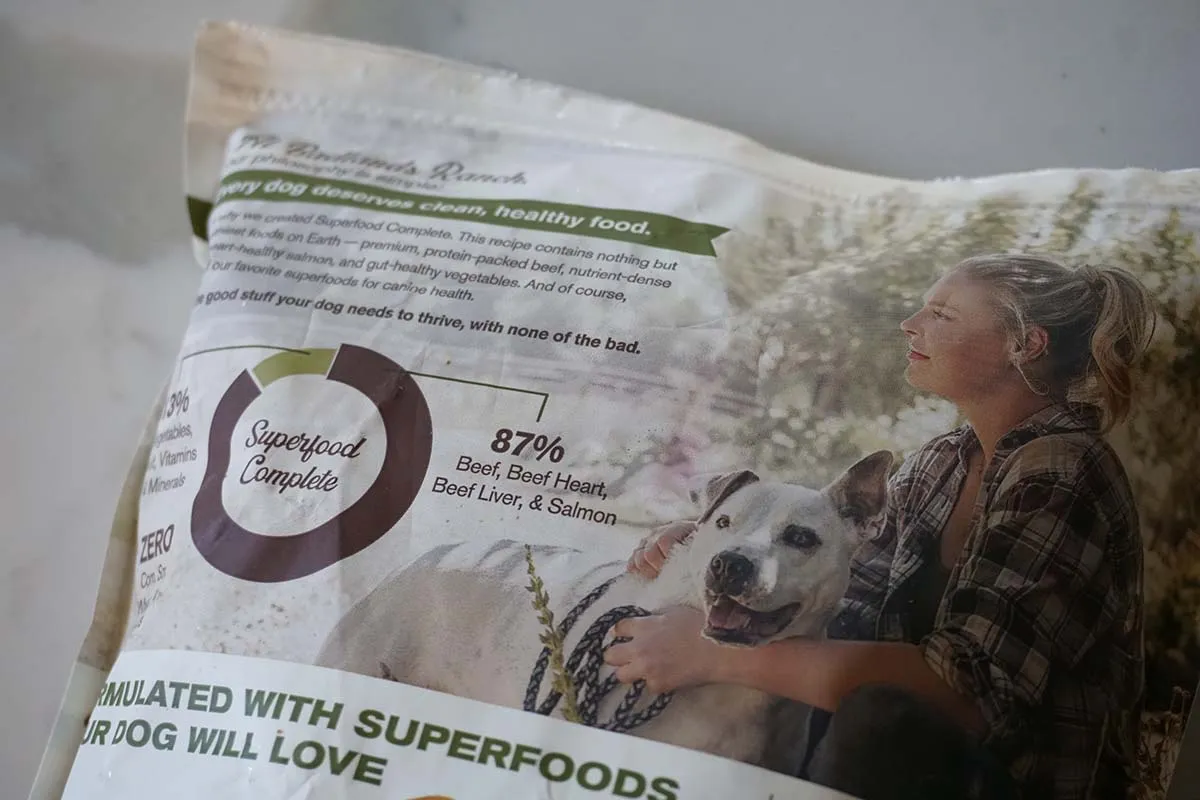 Badlands Ranch 87% meat content bag
Badlands Ranch 87% meat content bag
Yes, for air-dried enthusiasts seeking human-grade, high-meat options. It excels in convenience, taste for picky eaters, and nutrition. Skye finished most meals eagerly, using nuggets as rewards.
However, for better value and customization, Sundays edges it out. My dogs preferred it overall.
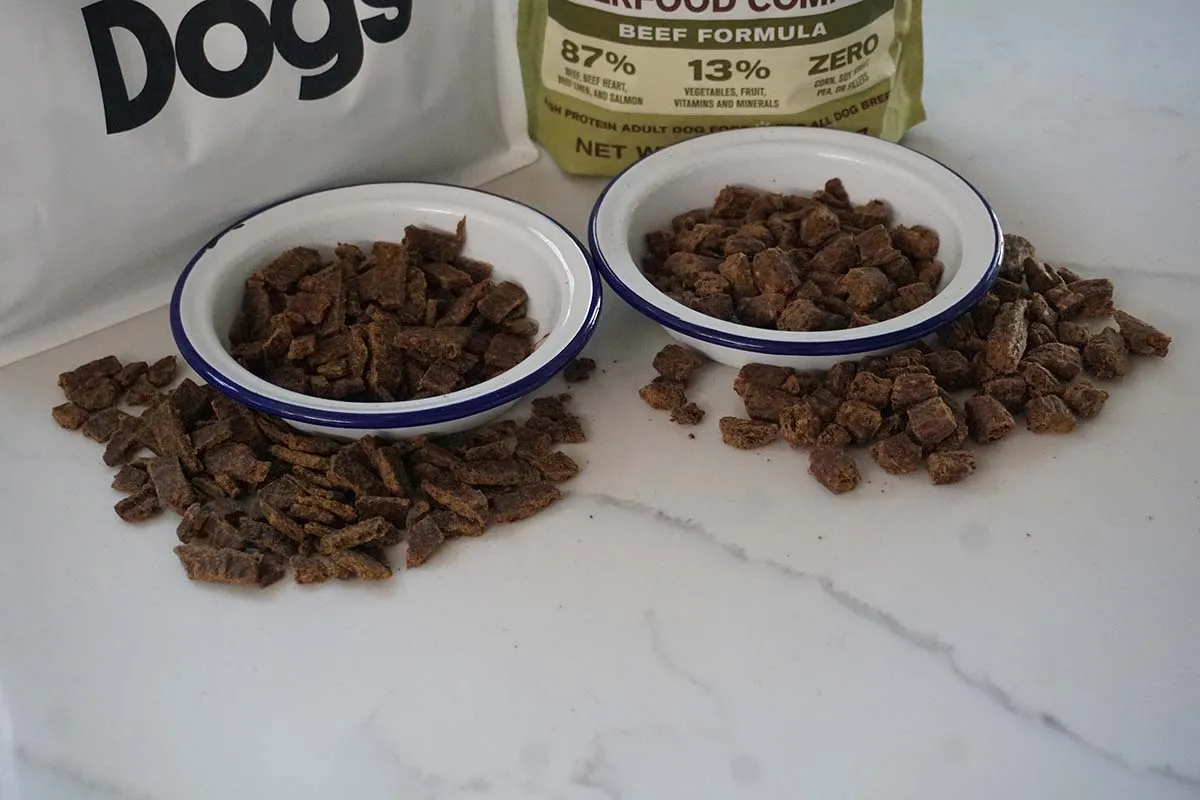 Sundays vs Badlands Ranch comparison
Sundays vs Badlands Ranch comparison
Explore farmers fresh dog food reviews if fresh appeals more.
Conclusion
In this Badlands Ranch dog food review, the pros—human-grade superfoods, gentle processing, and picky-eater approval—make it a solid choice over kibble. Cons like cost and bag size are trade-offs for quality.
As an experienced owner of sensitive Klee Kai, I trust it for occasional use or toppers. For everyday feeding, consult your vet and consider alternatives. Ready to try premium air-dried? Start small and monitor your dog’s response—your pup deserves the best.
References:
- Badlands Ranch official site (ingredient and processing details).
- Personal feeding trials with Alaskan Klee Kai (2023-2025).
- General pet nutrition guidelines from WSAVA.
